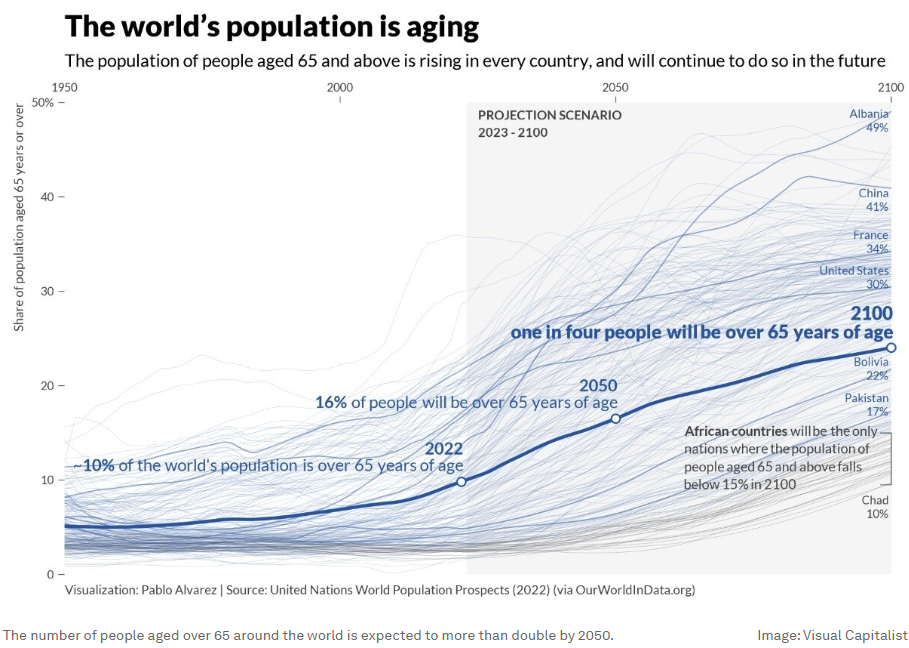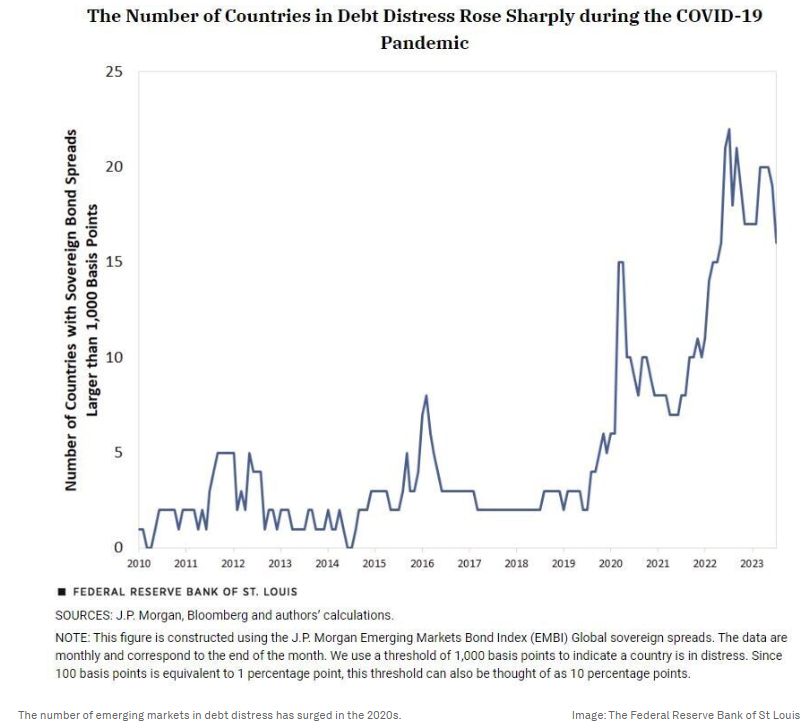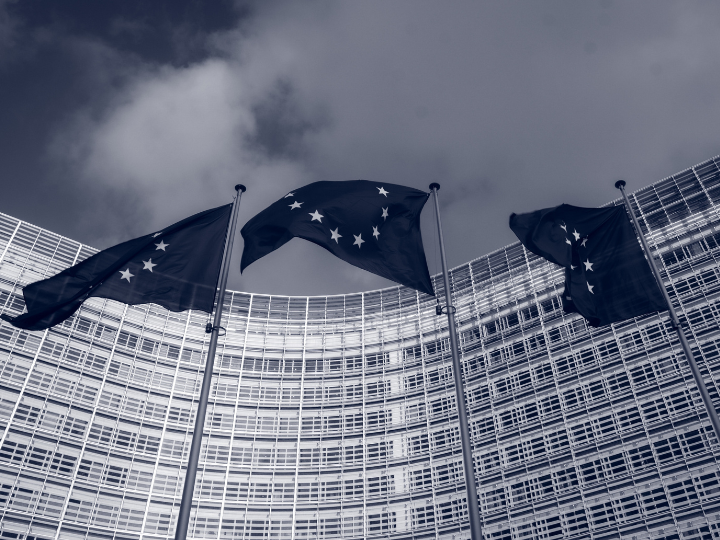by Linda Lacina and Ian Shine*
“The global economy is doing better than we expected just six months ago, but it’s doing much worse than it was six years ago.”
This is the broad view of Indermit Gill, Chief Economist of the World Bank and its Senior Vice President for Development Economics.
Gill has had his finger closer to the world’s erratic economic pulse than almost anyone else during the 2020s. Before taking up his current position in September 2022, he spent 18 months as Vice President for Equitable Growth, Finance, and Institutions at the World Bank, helping decide how it would react to seismic events such as COVID-19 and the outbreak of Russia’s war on Ukraine – the economic aftershocks of which are still being felt by developing countries.
A “lost decade” looms for these low-income countries as a result, and these nations are Gill’s main source of concern in the years ahead, he tells the World Economic Forum’s Radio Davos podcast.
“Because the world economy is not doing nearly as well as it should, because these countries’ trading partners are not doing well, they might end up having very slow growth,” he says. “As growth rates fall and population growth remains high, per capita income levels fall. [This is happening in] between 25 and 75 countries.”
Here are the other main talking points from Gill’s interview.
Slower growth and ‘secular stagnation’
While inflation has fallen and advanced economies are starting to think about growth again, the nature of this growth could prove problematic, according to Gill.
“The growth that the world economy is settling into is much lower than what we saw in the 2000s. It’s even lower than what we saw in the 2010s, which was lower than the beginning of this millennium. What’s happening is that we’ve seen a step down in terms of growth from the first decade of this millennium to the second to the third.”
This is leading to concerns around “secular stagnation” in advanced economies, as Gill explains. “This means slowing productivity growth and adverse demographics – essentially the ageing of the population and declining labour force participation.”
The number of people aged over 65 is set to more than double by 2050, and the world needs to start adjusting now for this new demographic era, the World Economic Forum’s Living Longer, Better: Understanding Longevity Literacy report has pointed out.

Around one in six people in the US were over 65 in 2020, but this could rise to more than one in three by 2050, according to projections from Deloitte. The implications this would have on the world economy would be unprecedented.
“The US economy matters the most because it matters for world economic output – it is about a quarter of it,” he says. “It’s the most dynamic among the advanced economies. And of course, it matters a lot when it comes to global flows of trade of goods, services and capital as well.”

Debt problems have a domino effect
Lower and middle-incomes countries paid a record $443 billion to service their debts in 2022, following spikes in interest rates. For Gill, however, the seeds of this problem were sown 20 years ago, when many of these countries received debt relief.
“In the early 2000s, there was quite a bit of money in advanced economies, so these [lower and middle-income] countries started to borrow a lot of money. Interest rates were relatively low and they loaded up on debt.”
Because most of this debt was contracted on floating exchange rates, once interest rates started to rise (and carried on rising), debt servicing burdens jumped rapidly.
“That has two or three effects,” Gill says. “The first is that you start to divert money. You continue to service your debt, but you divert money [to pay for it], usually from education, health, investments in infrastructure and so on. And as a result, the state of the people becomes poorer and the state of the economy gets worse.
“The idea is, you hope this is a temporary phase, that interest rates come down very, very quickly and that you can start to reallocate money again to do these things. But that has not happened, so many of these countries are groaning under the weight of this interest burden.”
Lower-income countries invest only around $54 per student per year in primary and secondary education when they have money to spend, according to Gill. “When you’re talking about them not being able to spend even that much, you’re really talking about a lot of people not being able to go to school,” he adds, pointing out that the typical high-income country spends around $10,000 per student per year.
Income sources drying up
The number of emerging markets in debt distress has surged in the 2020s, and Fitch Ratings says a record number of government debt defaults have taken place this decade, including in Lebanon, Ghana, Sri Lanka and Zambia.
“These countries are the ones you see headlines about, but there’s another group of countries that look seemingly fine, mainly because they haven’t borrowed abroad,” Gill says. “Instead, they borrowed at home, from life insurance companies, institutional investors and so on. And what happens with them is they start to borrow more and more to service their debts and they starve their private sectors of finance. So private investment falls… because the government is suctioning off all the finance from the economy. There is that crisis as well.”
As the private sector contracts in these countries, or as investment gets funnelled away from education and health to pay debts in other countries, a pattern emerges, particularly in lower-income countries where population growth is very high.
“A lot of people are actually in really dire straits and they start to look for jobs elsewhere,” Gill says. “The rest of the world only notices when you see a huge wave of migrants. What we are worried about is a lot of [these] countries getting into trouble and not being big enough or rich enough for others to care.”
Rethinking debt levels
With rising debt burdens and falling economic growth, debt-to-GDP ratios are inevitably going to rise. The makes any country less attractive to foreign investors, and as a result lower and middle-income nations “need to recalibrate what they thought was sustainable levels of debt”, according to Gill
“These are not going to be the levels of debt that people thought were sustainable in 2015 or 2016. When you’re talking about 2025-26, you should be thinking about much lower levels of debt. A low-income or a low-middle-income country that has a debt-to-GDP ratio of 80%, it should be thinking about a much lower level of debt.”
There will be countries that end up needing debt relief or restructuring as a result, but for Gill, what happens at this point also needs to be recalibrated.
“What we call sovereign debt restructuring, that system is broken. It’s for a time long ago, when these countries did not borrow from markets abroad, they borrowed from other governments.
“They borrowed from governments that actually knew about all of these things – the United States, Europe and so on – that had been in these cycles for years. They knew how to deal with these problems. Now you have new lenders like China and they don’t have experience with what to do when a country cannot repay its loans.
“For countries that are already in debt distress, we have to come up with a way to do orderly defaults. They should not be disorderly, they should not be delayed, they should not take forever and so on, because those end up causing a lot of trouble and sowing the seeds for future crises.”
*Senior Writers, Forum Agenda
**first published in:Weforum.org




 By: N. Peter Kramer
By: N. Peter Kramer

